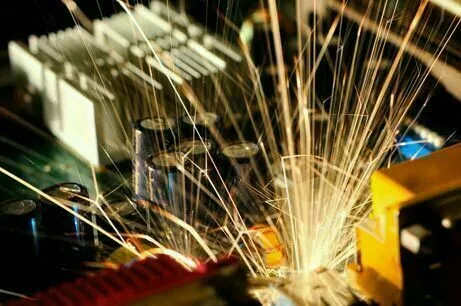Comparative Tracking Index: evaluation of the formation of conducting path in solid insulating materials

More and more products are being made with polymeric materials, elements that were traditionally designed and produced using conventional materials like metal, wood, ceramic, cardboard, glass, fabric, etc.
The substitution of these conventional materials for plastic materials should always allow for the proper development of the products they form, allowing them to maintain their functionality and even improve some of the characteristics closely linked to the use of these new materials, such as flexibility, thermal insulation, electrical insulation, mechanical resistance, etc.
Some replacement examples
On the one hand, a clear example of this possible replacement of conventional materials for polymeric materials that offer better performance than their predecessors is battery casings for electric vehicles. These casings package the set of modules and cells that make up the batteries and are usually made of metals such as steel or aluminium to make them more robust. However, the replacement of these materials for plastic materials:
- Also reduces the final vehicle weight.
- It also helps to make the material more compatible with the chemical components that make up the batteries, suitably insulating these elements.
- The use of polymeric materials instead of conventional ones also reduces the environmental impact as less energy is needed to propel vehicles with plastic components.
On the other hand, another example could be the manufacture of electronic printed circuits, where the physical supports of these printed or PCB circuit plaques could be changed. These are the benefits it offers:
- 3D printed plastic parts make it possible to incorporate this type of circuit into the parts developed, improving the performance of the devices that they are integrated into.
- Electronic printed circuits would make it possible to make parts of any size or shape to be integrated into smaller, more energy-efficient circuits. They will have a longer useful life, and therefore, greater performance.
In these two examples, it is vitally important that the insulated material used keeps these insulation properties throughout its life, regardless of the influence of dirt or humidity in the environment which could be deposited on the material. Therefore, it should have a “high” conductive path index indicating that the material is more resistant to these effects.
The Comparative Tracking Index
The value of this Comparative Tracking Index (CTI) determines the extent to which the insulating material can resist the unwanted current flow between the different conductive elements that are insulated by the material that is being evaluated. It is carried out using the method laid out in the IEC 60112 standard. It simulates an accelerated version of the surface discharge conditions that could be produced on the insulating materials by short circuits in humid and contaminated conditions. This could lead to the material catching alight and the propagation of a fire.
Firstly, the simulation will be carried out, as has been indicated, through a test based on standard IEC 60112. This test will be performed on the equipment used to subject the test specimen to a given voltage (from 0 to 600 V) with the aid of a pair of electrodes resting on the specimen. Between these two electrodes, a conductive solution or some electrolyte drops will be pumped through a needle at regular intervals. Then, after depositing each drop, the pump stops the electrolyte supply and then the intensity of the current between the electrodes is measured.
If this intensity does not exceed 500 mA the equipment will deposit another drop of electrolyte on the sample until a total of 50 drops of a solution have been deposited. If after releasing the 50 drops, the indicated current intensity has not been reached, the test can satisfactorily end with the initial voltage that was selected.
Additionally, the applied voltage can be increased to obtain the CTI of the material under evaluation. This means that Comparative Tracking Index would represent the maximum voltage, measured in volts, at which the material can support the dripping of 50 drops of conductive solution (water with ionic impurities) without producing conductive paths between the electrodes due to electrical voltage, humidity, and contamination.
Standard UL 1950 established a classification for insulating materials according to their associated CTI value.
| Insulating material group | CTI |
| I | 600 ≤ CTI |
| II | 400 ≤ CTI < 600 |
| IIIa | 175 ≤ CTI < 400 |
| IIIb | 100 ≤ CTI < 175 |
Our laboratory services
The AIMPLAS Characterisation Laboratory has the necessary equipment to carry out this test, which can reach a voltage of over 1000 V. Our facilities allow us to offer this service, both internally for the development of new plastic materials with improved insulation properties, and to companies that need their products to be characterised. We offer this service for products in the development phase as well as for finished, final products.
Jose Vicente Izquierdo
AIMPLAS Characterisation Laboratory